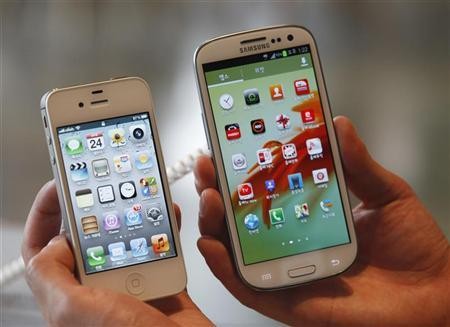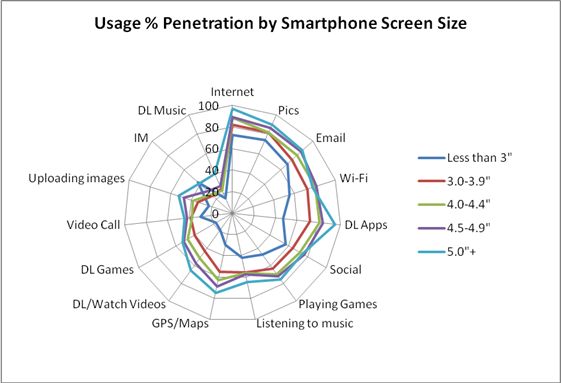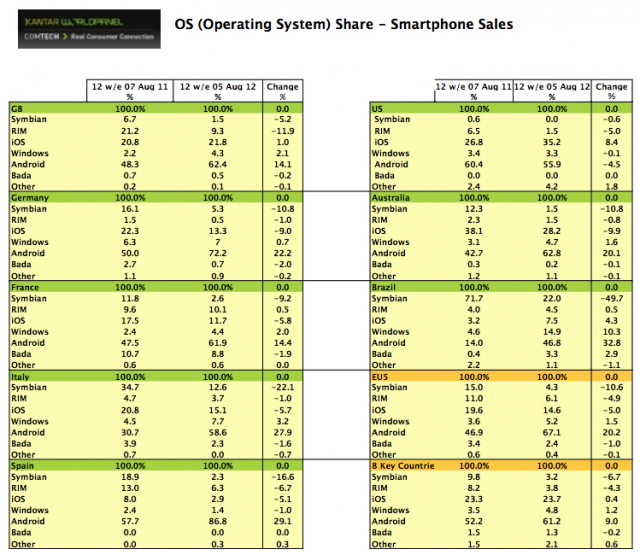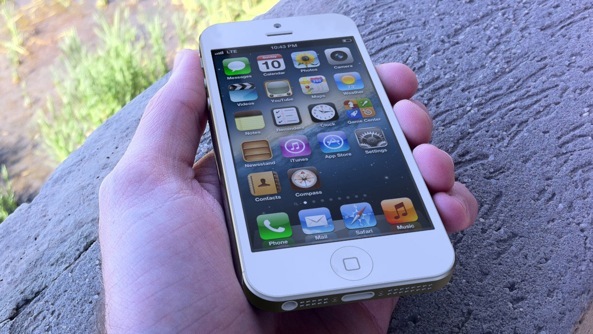Unless you’ve been sleeping under a rock for months, you’re aware that Android handsets have been gobbling up market share just about everywhere.
Everywhere except in the United States, that is, where Android phones declined by 4.5 percent as iOS grew by nearly nine percent year-to-year, per latest data from market research firm Kantar Worldpanel ComTech, the WPP-owned market analysts.
Android is big in Europe and has been growing its share steadily in other markets over the past three months, mostly exceeding the fifty percent share mark and in some countries even approaching total domination.
This surge in Android’s popularity has been seemingly led by jumbo-sized devices with screens sizes measuring four and a half inches diagonally and up. Considering that market share appears to favor the trend toward bigger smartphones, Apple has no doubt chosen the right time to release an iPhone with a bigger screen. Or has it?
According to survey data encompassing past twelve weeks (via TechCrunch), nearly one-third of all devices sold in the last three months had a screen size of over 4.5 inches.
Android now accounts for two-thirds of the smartphone market in Europe, up 20.2 percent year-over-year. Elsewhere, Android is equally a success story in terms of market share, going all the way up to a staggering 86.8 percent share in Spain (versus just 2.9 percent for iOS), or 75 percent share in Germany (versus 13.3 percent for the iPhone).
As you can see in the above chart, there appears to be an interesting correlation between screen sizes and usage patterns as owners of jumbo-sized smartphones surf the web and watch videos more often than those rocking devices with smaller displays.
And the more people interact with their devices, the more likely they are to remain loyal to the brand, conventional wisdom has it.
The survey notes that only one out of every five consumers with a screen smaller than three inches download and watch videos, compared to 65 percent when the screen is five inches or more.
That must be music to the phablet proponents‘ ears, I’m guessing.
Here’s the operating system market share data.
Again, Android claims more than half the market share in pretty much every territory, with iOS following in second place and Windows-powered devices or BlackBerrys a distant third, depending on a given market.
Specifically, TechCrunch writes, “across the eight most important markets, Kantar notes that Android has a share of 61 percent; while iOS is at 24 percent; and the rest all have five percent or less, led by Windows”.
Yeah, it’s a two-horse race.
Kantar’s findings related to smartphone screen sizes echo the results of iDB’s non-scientific poll, with a whooping 32 percent of respondents voting that a four-inch display should be the new gold standard for iPhones. One in five yearn for a 4.3-inch screen, like that on Samsung’s Galaxy S II.
Only a fraction of respondents, or less than seven percent, would feel comfortable holding in their hand an iPhone rocking a Galaxy S III class display which measures 4.8 inches diagonally.
An artist’s rendition of a rumored four-inch iPhone
Kantar analyst Dominic Sunnebo noted as much, writing how “it is interesting to look at the impact a larger screen size has on how consumers use their smartphones, particularly as the line between tablets and smartphones becomes more blurred”.
Apple’s iPhone since its January 2007 introduction has remained stuck with a 3.5-inch display that some people deem too tiny to enjoy movies, web sites, photographs and other content that really benefits from a bigger canvas.
Cupertino, of course, is expected to announce the next iPhone with a taller four-inch display at a media event next Wednesday, September 12. General availability is expected nine days later, on Friday, September 21.
The screen is said to be a bit taller but only marginally wider, still allowing for easy one-hand navigation with your thumb.
What do you think, is the time right for a bigger iPhone or did Apple made a grave mistake by holding out for too long and failing to recognize where the market’s been heading?
Note: the top right image is credited to Reuters/Lee Jae-Won.



